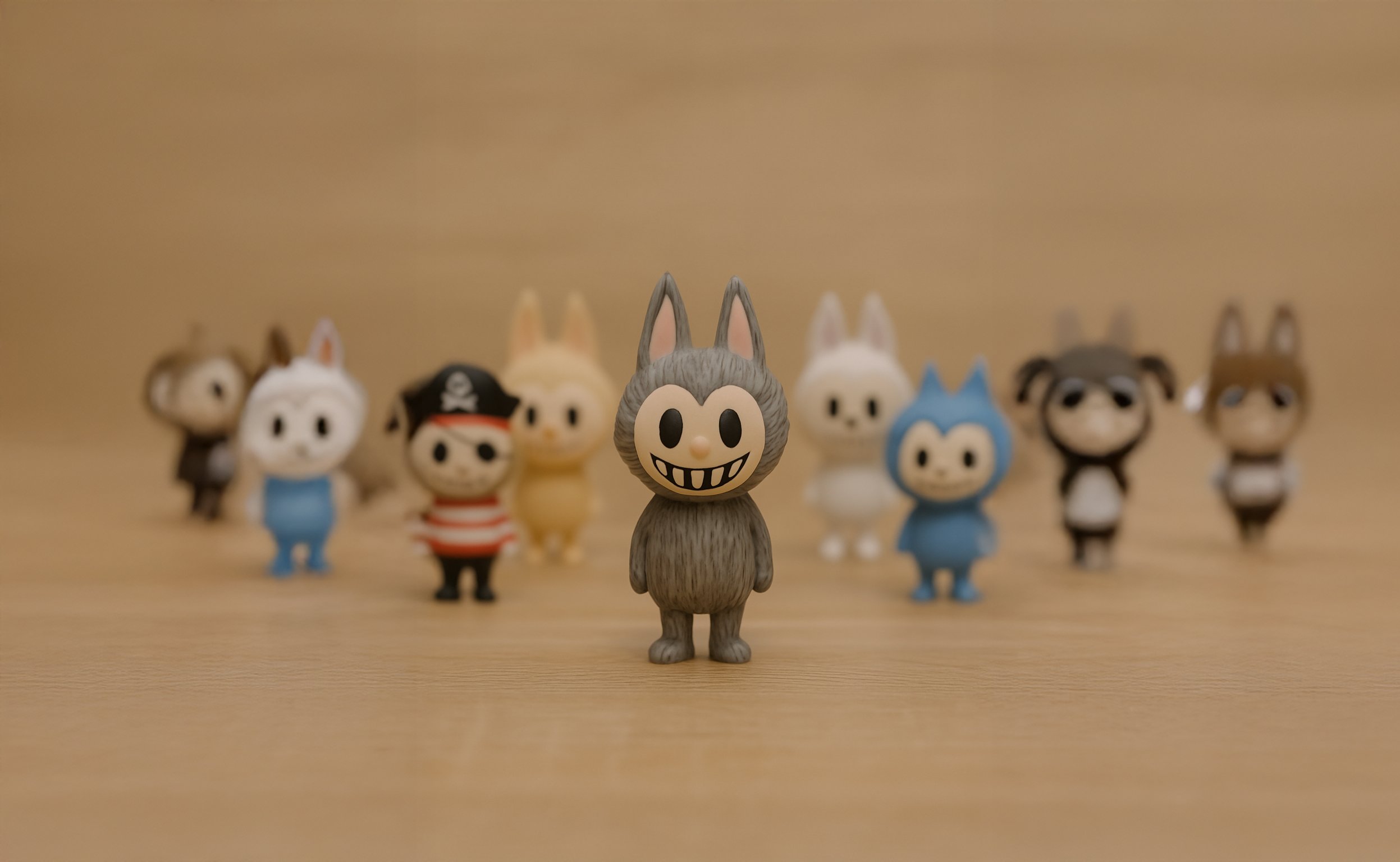In 2014, a mysterious creature was born. Sharp teeth, long ears, mischievous smile—Labubu looked like a gremlin who had been raised by Studio Ghibli and streetwear culture. Created by Hong Kong-based artist Kasing Lung, it lived quietly on collectors’ shelves for years. Cute, strange, niche.
But in 2024, something exploded.
Labubu isn’t just a toy anymore. It’s a global phenomenon—lining up fans in Tokyo, flying off shelves in Dubai, flooding TikTok with unboxings, and becoming the unexpected star of Gen Z’s aesthetic.
And behind that success is a UX story worth paying attention to.
1. From Obscure Toy to Viral Icon
Labubu didn’t change much. But the world around it did.
In a landscape shaped by short-form content, emotional buying, and a craving for physical connection, Labubu offered all three. It was:
- Visually strange (which made it shareable),
- Emotionally nostalgic (which made it stick),
- And sold in mystery boxes (which made it addictive).
The moment was right. But the experience? That was designed.
2. Designed to Spark Emotion
Don Norman, the godfather of UX, defines three levels of emotional design: visceral, behavioral, and reflective.
Labubu hits all three.
- Visceral: Its big eyes and weird proportions trigger an immediate emotional reaction—part love, part curiosity.
- Behavioral: The blind box creates a ritual. Buy. Unbox. Hope. Post. Repeat.
- Reflective: Fans start building collections. Not for resale—but for identity. Labubu becomes an extension of self.
This is deep UX. Not just function. Not just interface. Emotionally crafted design.
3. The Power of Surprise and Dopamine Loops
When you buy a Labubu figure, you don’t know which one you’ll get.
It might be the classic pirate. It might be the rare golden ghost. That uncertainty? It’s intentional.
This taps into:
- Variable rewards, the same psychology behind slot machines and social media likes.
- Unboxing rituals, which now dominate YouTube and TikTok.
- Gamified UX, where rarity drives obsession.
The blind box isn’t just packaging—it’s part of the experience architecture.
4. Scarcity as a UX Strategy
Pop Mart, the company behind Labubu, doesn’t flood the market. They control demand by limiting supply:
- Region-specific releases,
- Collabs with famous artists,
- No restocks once a series sells out.
This isn’t just marketing. It’s UX-led FOMO.
Scarcity shapes behavior. It adds urgency. It turns passive buyers into passionate fans. Smart UX designers do the same—whether it’s waitlists, limited access, or timed drops.
5. Community, Not Just Customers
Labubu fandom doesn’t live on a single platform—it lives everywhere.
Fans create:
- Instagram edits of their collections,
- Reddit threads to trade rare figures,
- TikTok stories about how they found their first Labubu.
This is participatory UX—where the user is part of the product’s narrative. The brand just provides the canvas.
For startups and product teams, the lesson is clear: design with your users, not just for them.
6. Physical UX in a Digital World
Walk into a Pop Mart store and you’ll feel it:
- Machines hum with gacha-style mystery box dispensers.
- Giant Labubu statues invite selfies.
- The packaging itself feels like a collectible.
It’s offline UX, treated with the same care as a digital onboarding experience. Every touchpoint is immersive. Every detail is intentional.
That’s a powerful reminder that UX doesn’t stop at screens.
7. What Labubu Teaches Product Designers Today
This isn’t about toys.
It’s about how people fall in love with products, and how great UX can turn something small into a movement.
Here’s what Labubu gets right:
- Emotional design builds long-term memory.
- Surprise and scarcity drive habit loops.
- Physical interaction matters more than ever in a digital world.
- Community-driven content sustains momentum without paid ads.
- Cross-touchpoint consistency creates obsession, not just attention.
Labubu shows us that successful products don’t just live in hands—they live in hearts, timelines, conversations.
Final Thought: Are You Designing a Product, or a Feeling?
In a world where most experiences are flat and transactional, Labubu reminds us of something important:
People don’t remember what your product did. They remember how it made them feel.
So as UX designers, marketers, and creators—what are we really designing?
Because if you can craft a feeling, you won’t just earn users. You’ll earn love.




